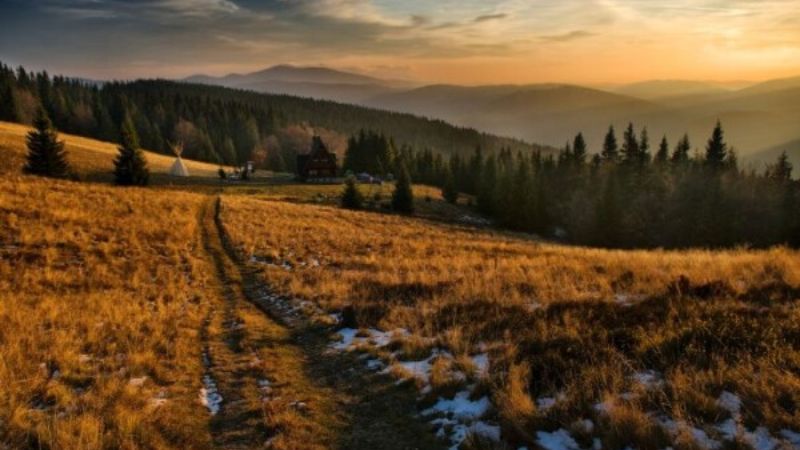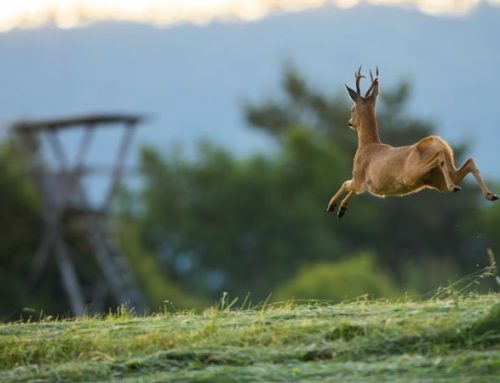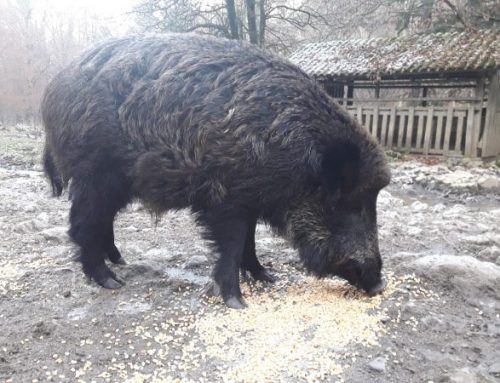At the border between Poland and Belarus, in the primeval forest of Białowieża, Bison hunting is now open.
The bison populations in Poland and Belorus have grown exponentially. Therefore, after decades of prohibition, a management hunt has become necessary.
In the early cold hours of the morning, among the frost-covered meadows of Białowieża, the warm breath of the bison forms clouds of vapor, making it feel like you’re facing a mythical creature. With its broad chest and head lowered towards the ground, it can be seen grazing the grass of the surrounding clearing. Characterized by thick brown fur and long horns, the European bison is the largest wild land animal remaining on our continent, with an average weight of around 600 kg, reaching up to 800 kg. Currently found in Central and Eastern Europe, the Polish mammal has few predators aside from humans!
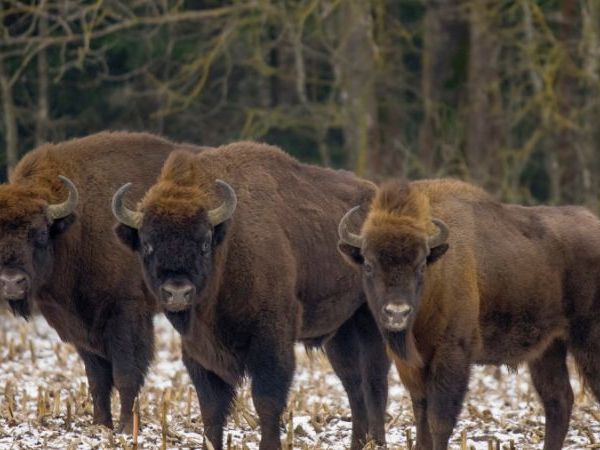
In the early decades of the 20th century, the mammal was hunted to the point of total extinction in the wild. However, through the breeding of individuals in captivity, which were later reintroduced into various european states, the presence of the animal has been consolidated over time, contributing to the continuous maintenance of the ecosystem’s balance. It is estimated that there are just under four thousand specimens in Europe, with the most famous and numerous herd located in the Białowieża Forest in Poland and Belarus, where these mammals live in the wild.
Comprising four immense interconnected forests, the Białowieża Forest spans approximately 1,500 kilometers and is considered the sanctuary of the European bison. Located about 70 kilometers north of Brest, it represents all that remains of the vast forest that thousands of years ago covered all of Europe, earning it a place among UNESCO’s World Heritage sites in 1979.
The forest is located 42% in Polish territory, where it is also protected as a national park, and the remaining 58% in Belarusian territory.
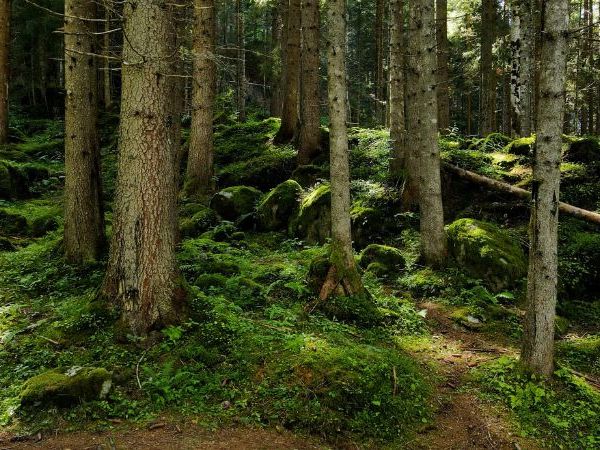
In Belarus, right on the border with Belarus, among ancient oaks and conifers, expanses of ferns and white willows, the hunt for the European bison is organized by selected agents under the guidance of a local professional.
The clearings provide nutritious grazing for the bison, which share the area with deers, wild boars, roe deers, and a few moose. Predators, such as wolves and lynxes, which are characteristic of the local fauna, are also present.
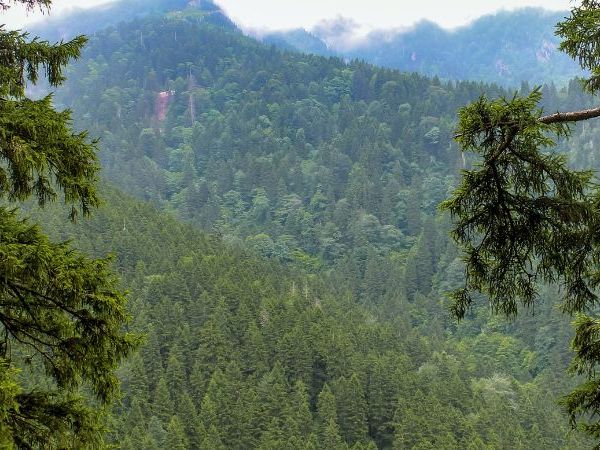
A good pair of binoculars and high-quality rifle optics are essential for accurately identifying the bison to be culled and ensuring a successful and ethical hunt. Because the bison is a very large and robust animal, with thick muscle layers and a dense bone structure, choosing the right caliber is crucial to guarantee a clean, humane shot. This hunt requires ammunition that combines significant stopping power, deep penetration, and reliable bullet expansion to reach the vital organs quickly, ensuring the animal is dispatched swiftly and minimizing any suffering.
Why These Calibers Are Ideal for Bison Hunting
9.3×62 and 9.3x74R: These calibers are well-known for their deep-penetrating capabilities and are often recommended for large game hunting in Europe. The 9.3mm bullets have sufficient weight and diameter to create a large wound channel, which is crucial when targeting such a sturdy animal. Their moderate recoil also allows for better shot placement, which is essential for hunting ethically.
- .375 H&H Magnum: A classic choice for dangerous game hunting worldwide, the .375 H&H has a proven track record for taking down big, tough animals. With bullet weights ranging from 270 to 300 grains, it offers excellent balance between power and recoil. Its versatility and ability to maintain high velocity and energy even at longer ranges make it particularly suited for bison hunting, ensuring deep penetration through thick hide and muscle.
- .338 Winchester Magnum: This caliber is favored for its flat trajectory and impressive power. The .338 Win Mag combines a higher velocity with a slightly smaller diameter than the .375 H&H, making it a great choice for hunters who need accuracy at extended distances. It offers a good compromise between long-range capability and effective terminal ballistics for deep penetration and large wound channels.
- .338 Lapua Magnum: While often associated with long-range shooting, the .338 Lapua is also an excellent choice for bison hunting, especially when shots need to be taken from a considerable distance. Its high velocity and heavy bullet weights ensure not only precision but also the necessary force to break through the bison’s robust shoulder bones and reach vital organs, delivering a quick and clean kill.
- .340 Weatherby Magnum: Known for its high velocity and impressive energy, the .340 Weatherby Magnum provides a powerful punch suitable for large game like bison. With its flat trajectory, it is ideal for hunters who need to take shots at varying distances, offering the power needed to anchor the animal efficiently.
- .378 Weatherby Magnum: This is one of the most powerful commercial hunting calibers available, designed specifically for the largest and toughest game. It delivers exceptional energy transfer on impact, making it perfect for bison hunting where penetration through thick hide and muscle mass is essential. The .378 Weatherby can take down even the most massive animals with a single, well-placed shot, ensuring that the hunt is both effective and humane.
Why Power and Precision Matter
Bison are not only massive in terms of size, but they are also incredibly resilient animals that can withstand poor shot placement with surprising tenacity. The chosen caliber must have the capability to penetrate through heavy muscle and bone while retaining enough energy to reach the vital organs, such as the lungs and heart. This is particularly important because a bison’s heavy frame and thick hide make it much harder for smaller calibers to create the desired effect, even if the shot is accurately placed. Calibers like the .375 H&H and the larger Weatherby options are specifically designed for such scenarios, where deep penetration and large wound channels are crucial.
Furthermore, a powerful caliber ensures a faster, more humane harvest, reducing the risk of the animal running a long distance after the shot, which not only causes unnecessary suffering but also makes recovery more challenging. Therefore, these recommended calibers are not just about hitting the target—they’re about ensuring that the shot is lethal, minimizing suffering, and providing a successful and ethical hunting experience.
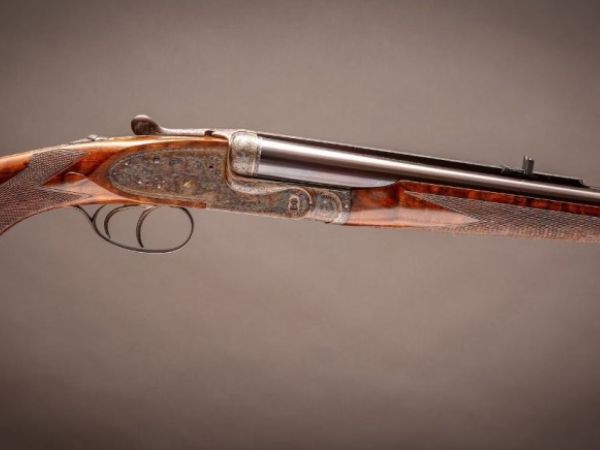
Bison hunting in Belarus is considered one of the most prestigious hunts in Europe, both for its exclusivity due to the limited number of available animals and for the magical experience during the hunt among the majestic oaks of one of the oldest forests on the continent.
The European Bison
The European bison (Bison bonasus) is the largest land mammal in Europe. In the past, it was widespread across Central and Eastern Europe, but it was hunted, often to provide meat for armies at war, until its complete extinction in the wild in 1927.
However, a small group of bison survived in captivity in various European zoos. Starting in the 1950s, these bison were reintroduced into the wild in the Białowieża Forest.
Today, the bison population in the Białowieża Forest is about 500 individuals. Bison are a symbolic species of the Białowieża Forest and attract tourists from all over the world.
Since the 1950s, projects have been initiated to reintroduce the European bison into the wild. These projects have been successful, and today the population of European bison is about 3,500 individuals, with about 1,800 living in Poland, Belarus, Lithuania, Ukraine, and Russia.
European bison live in groups of 10-20 individuals, led by a dominant female. They feed on a variety of plants, including grass, leaves, bark, and branches.
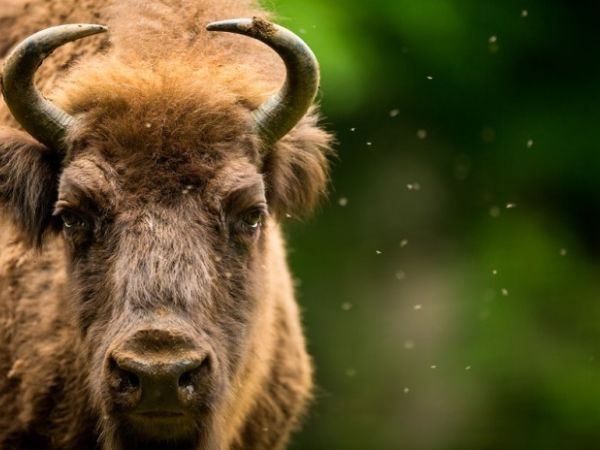
An example of European Bison in the Bielowieza Forest in Belarus
European bison play an important role in the European ecosystem. They contribute to seed dispersal, vegetation regulation, and biodiversity conservation.
The situation of the European bison is improving, but the species is still considered vulnerable except in Poland. The main threats to its survival are habitat fragmentation, poaching, and diseases.
In Italy, the European bison is present in ew protected areas: the Abruzzo, Lazio, and Molise National Park and the Sila National Park. In total, there are about 100 European bison living in Italy.
Here are some specific details about the status of the European bison in Europe:
– 90% of European bison live in four countries: Poland, Belarus, Lithuania, and Ukraine.
– The population of European bison is increasing.
– The main threats to the survival of the European bison are habitat fragmentation, poaching, and diseases.
– The reintroduction projects for the European bison have been successful, but it is important to continue monitoring the species’ situation and protecting its habitat.
Experience this unique adventure by planning your hunt in Belarus in advance!

